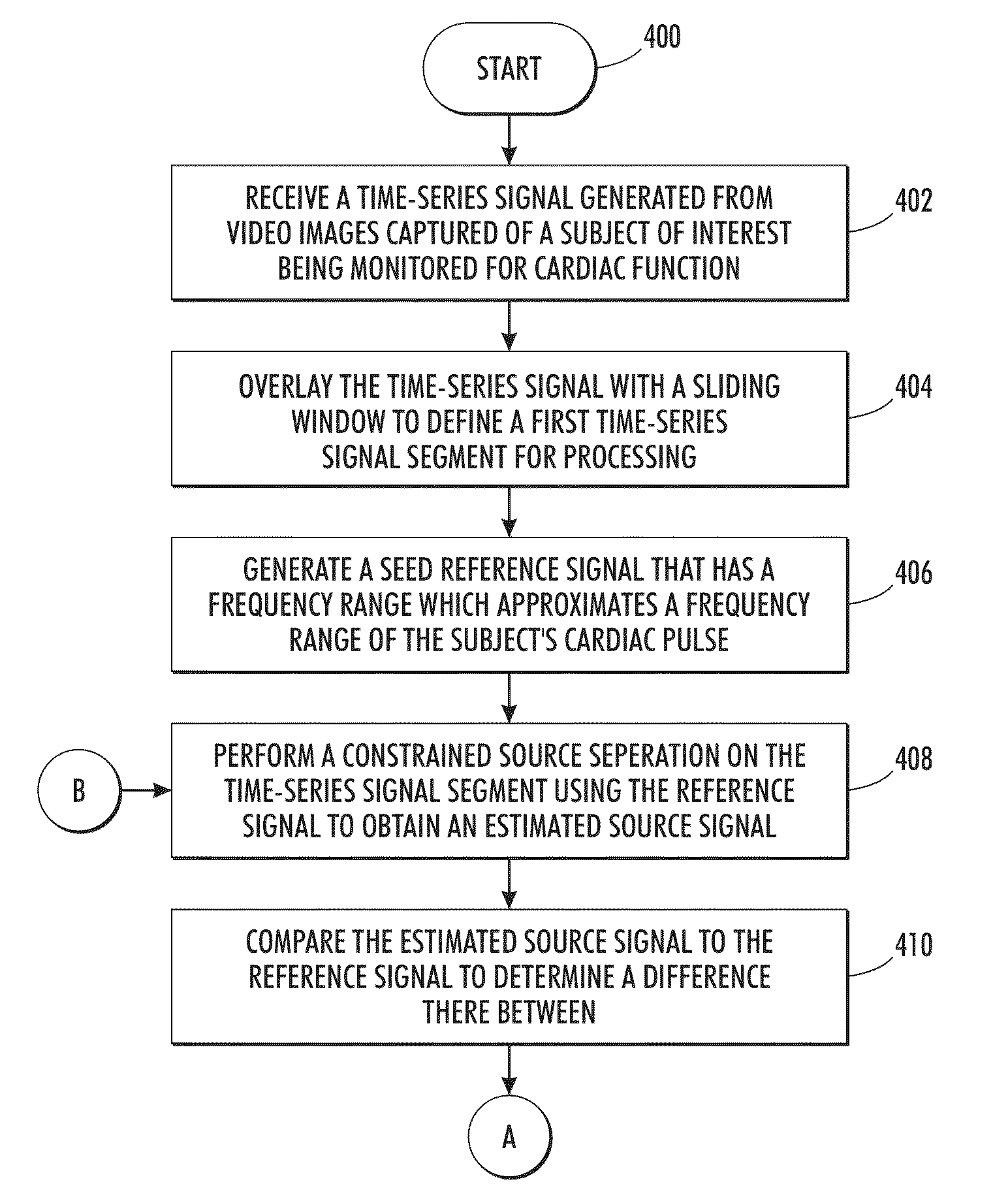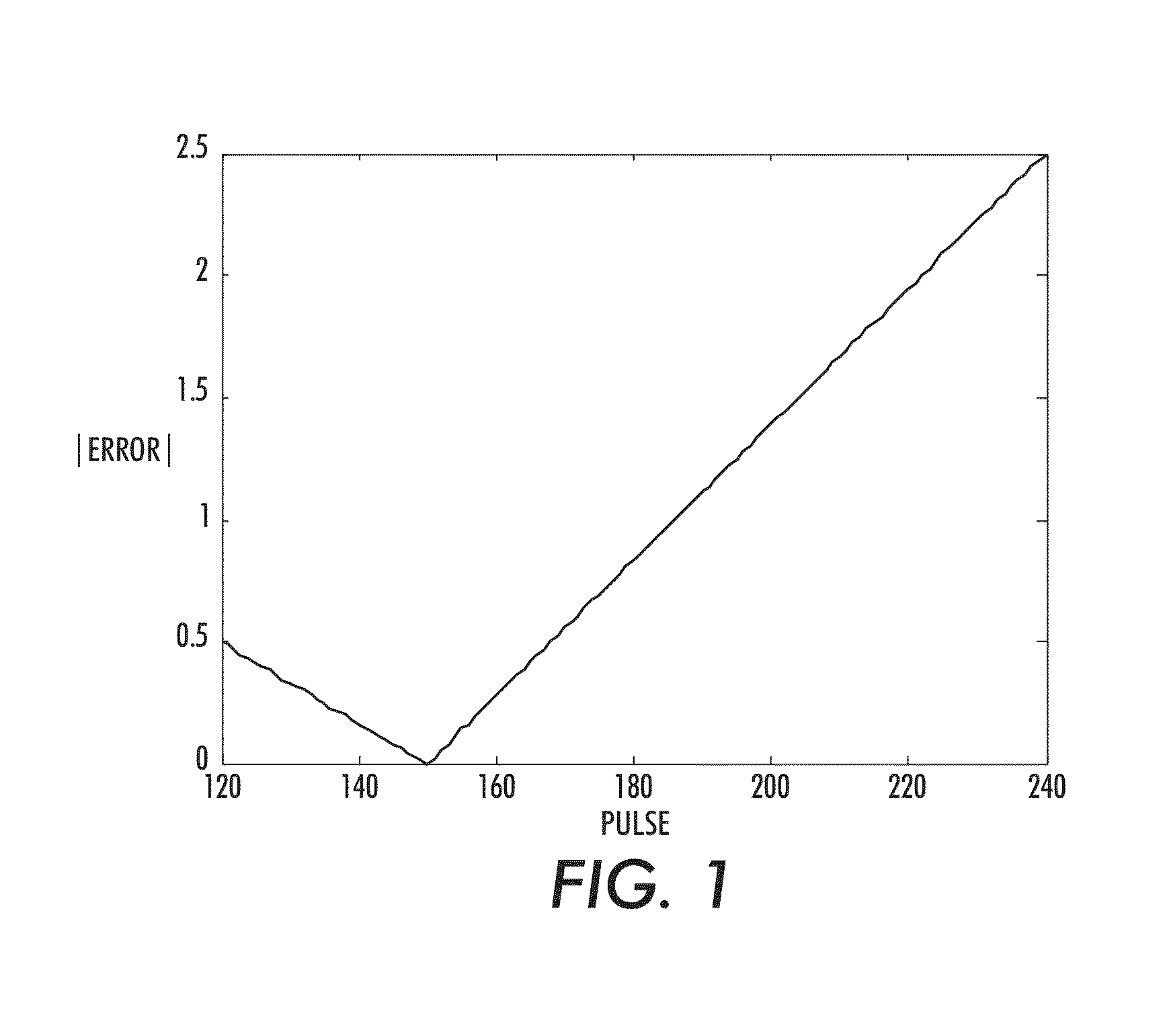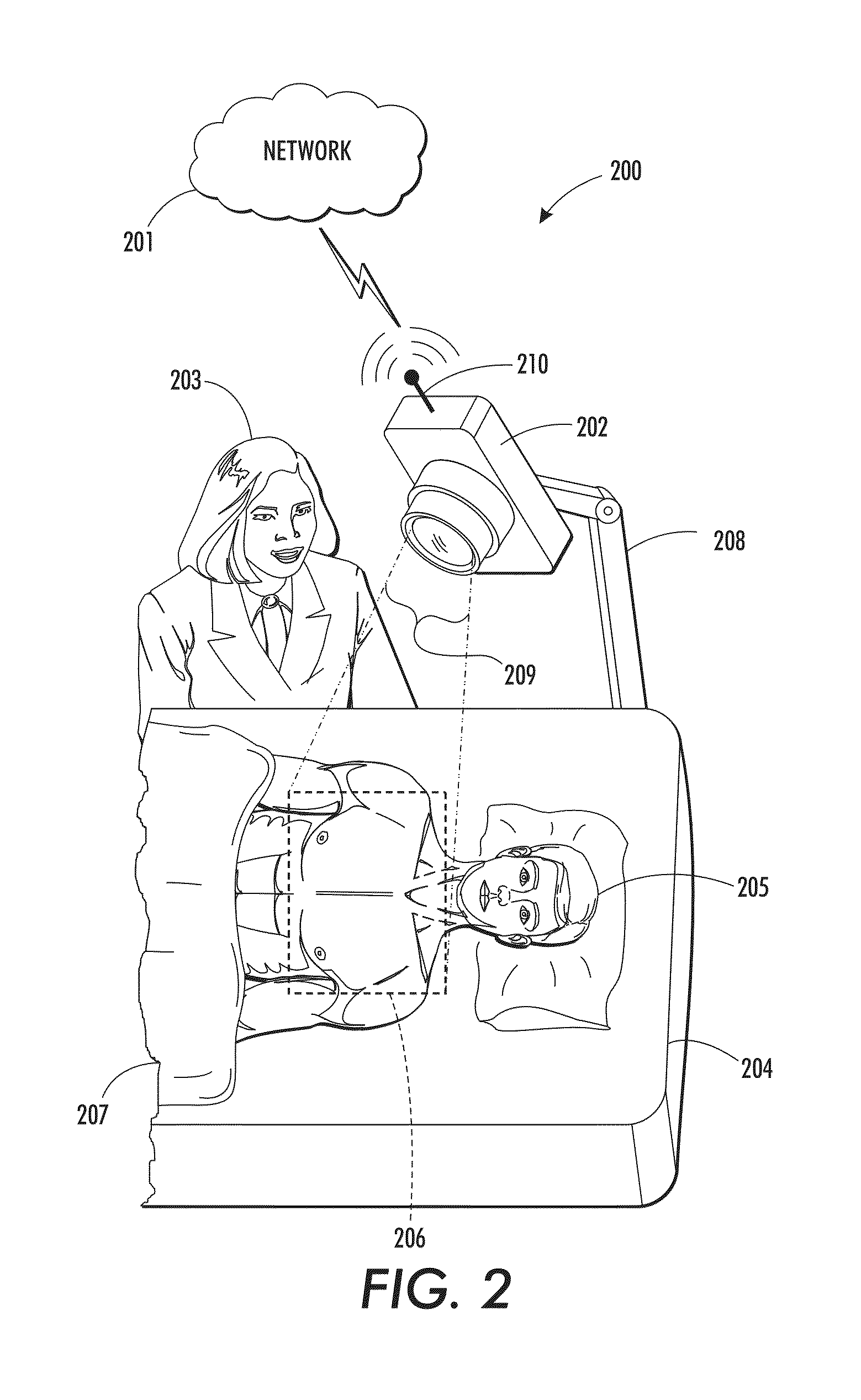Continuous cardiac pulse rate estimation from multi-channel source video data
a source video and cardiac pulse rate technology, applied in the direction of heart/pulse rate measurement/recording, instruments, recognition of medical/anatomical patterns, etc., can solve the problem of computational intensiveness and achieve the effect of high degree of measurement accuracy
- Summary
- Abstract
- Description
- Claims
- Application Information
AI Technical Summary
Benefits of technology
Problems solved by technology
Method used
Image
Examples
example functional
[0075]Reference is now being made to FIG. 9 which illustrates a block diagram of one example processing system 900 for implementing various aspects of the present method described with respect to the flow diagrams of FIGS. 4-6.
[0076]The embodiment of FIG. 9 receives a sequence of video images captured of a subject of interest intended to be monitored for cardiac function. The captured video images are either a plurality of multi-spectral images 902 captured using a multi-spectral camera or a plurality of RBG images 903. The sequence of images 902 or 903 collectively comprises multi-channel source data acquired over time. Signal processing system 904 receives the multi-channel source data into source signal recovery module 906 which performs all the functionality as described in embodiment of FIG. 3. Memory 908 and CPU 910 facilitate the processing and output an estimated cardiac pulse rate 318. Estimated cardiac pulse rate 318 is communicated to workstation 913 and mult...
PUM
 Login to View More
Login to View More Abstract
Description
Claims
Application Information
 Login to View More
Login to View More - R&D
- Intellectual Property
- Life Sciences
- Materials
- Tech Scout
- Unparalleled Data Quality
- Higher Quality Content
- 60% Fewer Hallucinations
Browse by: Latest US Patents, China's latest patents, Technical Efficacy Thesaurus, Application Domain, Technology Topic, Popular Technical Reports.
© 2025 PatSnap. All rights reserved.Legal|Privacy policy|Modern Slavery Act Transparency Statement|Sitemap|About US| Contact US: help@patsnap.com



